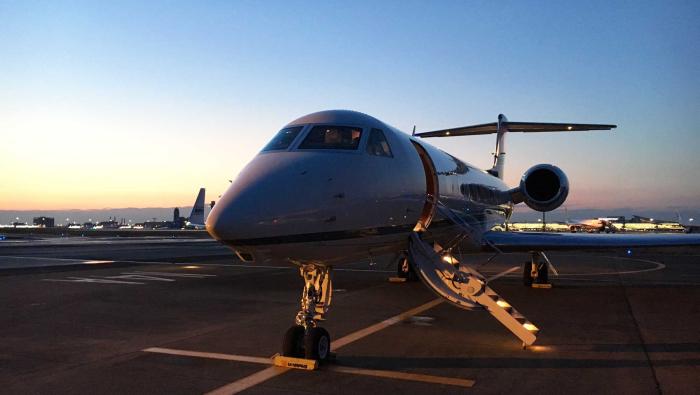|
Under an update to EASA Aircrew Regulation (EU) No. 1178/2011, pilot training, skills tests, and proficiency checks for certain aircraft can be conducted in a qualified flight simulation training device (FSTD) and are no longer limited to full-flight simulators. “This ruling sets a new benchmark for safety and accessibility in helicopter training across Europe,” said Loft Dynamics founder and CEO Fabi Riesen. “Helicopter training has long been constrained by the high costs and limited availability of full-flight simulators, resulting in increased travel time and expenses for regular training and checking, as well as the lack of realism and capabilities in other traditional simulators. With one-third of all helicopter accidents occurring during training and checking, there is an urgent need for more practical and safer training solutions.” Loft Dynamics’ Airbus H125 virtual reality (VR) FSTD received EASA Level 3 qualification in 2022 and FAA qualification in July 2024. The H125 FSTD, developed in concert with Airbus Helicopters, provides a full-scale virtual replica cockpit with a panoramic 360-degree view, verified flight modeling, and a six-degrees-of-freedom motion platform. The new EASA rule eliminates reliance on full-flight simulators “and approves Loft Dynamics FSTDs for all training and proficiency checks,” according to Loft Dynamics. “Another proof point that this shift is not just industry-driven—regulators are continuing to align as well. This is expected to accelerate the use and adoption of Loft Dynamics VR FSTDs across Europe.” |
|
|
Having spent nearly 25 years in business aviation, it’s heartbreaking to see flight departments close. Too often this happens because the true value the department provides isn’t fully understood or communicated. But there is a way for Part 91 organizations to potentially secure their future and demonstrate their worth by creating synergies between private aviation and corporate travel—in other words, by unifying business travel under one umbrella with the aviation department taking full ownership. I recently spoke with Brian Hunter, the v-p of travel at Jack Henry who has successfully managed all aspects of corporate travel for nearly 25 years. His approach is a blueprint for how flight departments can transition from being viewed as cost centers to becoming critical assets, saving both time and money while keeping the organization running efficiently. At Jack Henry, the in-house department manages the company’s entire travel needs, from company-owned aircraft to airline bookings. This integrated approach drives efficiencies, reduces costs through quantifiable time savings, and provides an unmatched level of service. These benefits go far beyond convenience, contributing to employee retention and enhancing work-life balance. |
|
|
With major changes in store for the aviation industry, Connecticut’s Tweed New Haven Airport (KHVN) has been selected by NASA and the National Renewable Energy Laboratory (NREL) as the first FAA Part 139 commercial airport in the U.S. to join the “Airports as Energy Nodes” research program. KHVN is operated by Avports. A joint activity between NASA and the NREL, the program is aimed at determining how airports can provide the proper forms and amounts of energy needed for future aviation operations with consideration to scalability, affordability, and sustainability. With the goals of zero-emission aviation, advanced air mobility, and electrification of vehicles, airports will require alternative forms of energy while positioning them as “a desirable component of the community energy solution.” As part of the research, the NREL will create an energy virtual twin of the airport and validate it using its Advanced Research on Integrated Energy Systems platform. That will allow it to evaluate KHVN’s current and future energy demands. “The goal is to develop robust solutions to an uncertain future mix of vehicles/energy needs and types, provide lasting community value, and enable investment pathways that accelerate adoption,” said Nick Borer, the program’s principal investigator at NASA. “Our objective is to work with NREL and regional airports such as HVN to generate data, reports, and designs of future airport energy architectures for full-scale development and demonstration.” |
|
|
ExecuJet, the ground handling arm of Luxaviation Group, has expanded its footprint in the Mediterranean region with the establishment of a partnership with Executive Aviation Malta, which operates an FBO at Malta International Airport (LMML). Established in 2010, the full-service facility located on Apron 3 at LMML includes two passenger lounges, a flight planning area, crew lounge, shower facilities, concierge, and crew cars. It provides into-plane fueling, customs support, and a meet-and-assist program for arriving aircraft. While Malta has nurtured a reputation as a popular place for non-EU operators to register aircraft that they want to operate within the EU, it’s also become popular with some operators in other EU states since its regulators have a reputation for being user-friendly and less bureaucratic than some larger states. With its growing registry and facilities that cater to super yachts, the country has become a hotspot for high-net-worth individuals, the financial sector, and global corporations. “The addition of Executive Aviation Malta to our FBO portfolio underscores our commitment to providing seamless and outstanding services in key locations worldwide,” explained Luxaviation Group CEO Patrick Hansen, adding that the company is committed to increasing its presence in the region. “Malta’s unique position within Europe and its proximity to North Africa enhances our clients’ operational flexibility, making it a prime location for technical stops and business aviation services.” |
|
|
Sponsor Content: Western Aircraft Discover the secrets behind Western Aircraft’s remarkable journey from a small corporate flight department to a leading MRO provider. Explore how Western Aircraft has evolved, expanded, and continues to set the standard for excellence, serving a diverse range of airframes and making its service mark in the Gulfstream aftermarket. |
|
|
NBAA has teamed up with ServiceElements International to offer a Business Aviation Customer Service Certificate program designed to provide training and enhance the professionalism of customer service specialists in the industry. Eight self-paced, on-demand learning modules with knowledge checks and a final assessment are included in the program. Upon completion, professionals receive the NBAA Business Aviation Customer Service Certificate, which is valid indefinitely, and they also earn Certified Aviation Manager credit. The program provides a baseline knowledge with introductory to mid-level training on elements of exemplary customer service, NBAA said, and also encourages advanced learning in customer service management. Module topics review outstanding and poor customer service, what to expect from today’s business aviation customers, managing customers, customer expectations and bringing a value proposition, safety and teamwork, communications, and challenging interactions. Registrants have a six-month window to complete the course. Pre-registration is available now, and course material will be ready in January. “There is a lot of great training out there, but nothing that really puts it together all in one place,” said Tyler Austin, NBAA senior director of credentialing. “Many of our members were going outside of aviation training for customer service needs, and there wasn’t something that was really designed holistically for the aviation industry, so we quickly realized that there was a need.” |
|
|
The Senate Committee on Commerce, Science, and Transportation convened a hearing addressing cybersecurity threats in the aviation industry on Wednesday. “The reality is stark. Our aviation industry is under constant threat from cyber attacks, up 74% since 2020,” said committee chair Maria Cantwell (D-Washington). Cantwell began the hearing by recounting the recent cyber attack on Seattle-Tacoma International Airport (KSEA). “Airport leaders…shut down various computer systems that run everything from ticketing to display boards to baggage claims, creating a confusing environment for passengers and workers and, yes, delaying flights,” she said. “The display boards were down for a week.” Lance Lyttle, aviation managing director at KSEA, said previous plans to prepare for a ransomware event helped the airport navigate the crisis. Marty Reynolds, managing director for cybersecurity at Airlines for America and former brigadier general of the U.S. Air Force, warned that there is currently not a sufficient amount of information sharing among federal agencies in regard to aviation cybersecurity. “Although federal agencies have made strides to improve information sharing, such as multi-agency threat bulletins, information sharing among federal agencies and with the aviation sector needs improvement,” he said. John Breyault, v-p of public policy, telecommunications, and fraud at the National Consumers League, also warned about the risk of cyber theft that is prevalent in the industry. |
|
|
The FAA this week adopted a previously proposed airworthiness directive (AD) ordering the installation of placards and airplane flight manual changes for Cessna Citation CJ family jets equipped with Tamarack Aerospace active technology load alleviation system (Atlas) winglets. This directive was prompted by a report of the potential for a failure of certain system components in which a loss of load alleviation would be unannunciated. Tamarack’s Atlas modifies CitationJet/CJ1, CJ2, and CJ3-series models with winglets and the Tamarack active camber surfaces (TACS), which actuate during flight to reduce the increased load on the wings caused by the winglets. Approximately 200 aircraft—about 10% of the eligible CitationJet/CJ fleet—have Tamarack winglets installed, according to the company. Within 60 hours of time in service or six months from Oct. 22, 2024, placards must be installed by an A&P mechanic or repair station on the left-hand inboard edge of the TACS to enhance visibility of their movement during night operations or to provide contrast if the TACS are painted a dark color. It also requires revising the AFM to include instructions for preflight checks of Atlas before taxi. The AD essentially mandates compliance with a Tamarack service bulletin issued on April 19, 2023. Modification costs are being covered by Tamarack, which said it is also working on a permanent fix. |
|
|
GKN Aerospace is adding more than 50,000 sq ft (5,000 sq m) to its aero-engine manufacturing facility in Trollhättan, Sweden, an expansion the aerospace supplier said will provide it capacity to keep up with growing demand for its engine work. To be fully operational in 2026, the new production area in its Swedish facility will enable it to add the latest digitized fabrication processes for its engine systems and major structural components as it supports a global aerospace industry ramp-up. The Trollhättan facility produces engine components for civil and military aircraft, along with rockets. These range from intermediate cases and compressor exhaust cases to turbines and nozzles. Trollhättan is also a center of excellence for laser-wire deposition additive manufacturing technology. In January, GKN announced that it was establishing an additive fabrication center of excellence at the site. “We are seeing record order backlogs and strong growth potential across the industry, and this expansion enables us to support our customers and seize that opportunity,” said Joakim Andersson, president of GKN Aerospace’s engines business. |
|

Photo of the WeekRising sun. Corporate pilot Steve Thorpe took this photo of one of his company’s two Gulfstream G550s before a dawn departure from Tokyo Haneda Airport (RJTT). The Japanese name for Japan is Nihon or Nippon, which literally mean “where the sun originates.” Since the country is more eastward than China, Japan is considered to experience the first sunrise each day. Thanks for sharing, Steve! Keep them coming. If you’d like to submit an entry for Photo of the Week, email a high-resolution horizontal image (at least 2000 x 1200 pixels), along with your name, contact information, social media names, and info about it (including brief description, location, etc.) to photos@ainonline.com. Tail numbers can be removed upon request. Those submitting photos give AIN implied consent to publish them in its publications and social media channels. |
|
|
|
|
AINalerts News Tips/Feedback: News tips may be sent anonymously, but feedback must include name and contact info (we will withhold name on request). We reserve the right to edit correspondence for length, clarity, and grammar. Send feedback or news tips to AINalerts editor Chad Trautvetter. |
|
AINalerts is a publication of AIN Media Group, 214 Franklin Avenue, Midland Park, New Jersey. Copyright 2024. All rights reserved. Reproduction in whole or in part without permission is strictly prohibited. |















